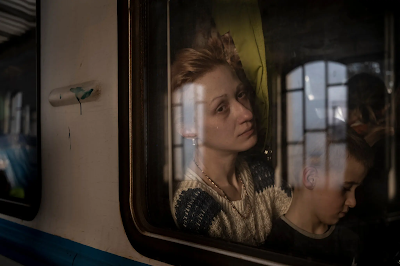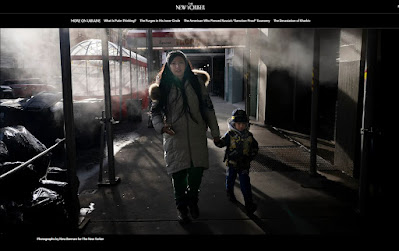© Steve Schapiro: I'm Still Alive”, Chicago, 2017
Via The Albuquerque Journal
By
Kathaleen Roberts / Journal Staff Writer
Sunday, June 30, 2019
ALBUQUERQUE, N.M. — When visitors walk through Santa Fe’s Monroe Gallery, they often say great photojournalism has been relegated to the legacy of World War II and the civil rights movement.
“Living in History” aims to correct that misconception while the press is under continued attack.
Opening on Friday, July 5, the exhibition showcases images documenting subjects and events from the 21st century, including the Occupy Wall Street protests, the Black Lives Matter protests, the Syrian refugee crisis and the U.S.-Mexican border immigration and refugee crisis, among others
“This profession is alive and well, although it’s under tremendous duress,” Michelle Monroe, co-owner of the Santa Fe gallery, said.
The effect of the constellation of platforms available across the internet, social media and cellphones within the past 30 years has diluted and scattered both information and images that used to be concentrated in newspapers and Life magazine, she said.
“There’s material from the Arab Spring; there’s material about the surveillance state post-9/11,” she added.
The prone Chicago protester in Steve Schapiro’s “I’m Still Alive” photo wears a T-shirt encapsulating the Black Lives Matter protests roiling across the U.S. in reaction to the Ferguson, Mo., police shooting of 18-year-old Michael Brown.
“He’s making the statement that they have survived, that they are forces to be reckoned with,” Monroe said.
Nina Berman’s “
Aftermath” shows 2016 Uranium Remembrance Day in Church Rock. Residents of Navajo communities were calling for an end to uranium mining. One of the largest nuclear catastrophes in U.S. history occurred in 1979 when the dam at the site broke, discharging more than 1,000 tons of solid radioactive mill waste and 93 million gallons of radioactive tailings solution into the Rio Puerco. Mining on Navajo land ended, but calls to revive it continue. Residents march to honor all those who died and were sickened by uranium mining and to demand a thorough cleanup and compensation.
Robert Wilson’s 2018 photo of
religious leaders being arrested near San Diego for protesting President Donald Trump’s immigration policies sums up the issue in a single frame.
“They’re leaders from all faiths,” Monroe said. “He was traveling with the caravans through Mexico. In order to get these shots, (it’s) what people are compelled to do.”
Ashley Gilbertson’s 2015 photo o
f Syrian, Iraqi and Afghan refugees leaping from a raft near Scala on the island Lesvos, Greece, captures the desperation of the immigrants in the choppy Agean Sea. The exodus of refugees from Africa, Central Asia and the Middle East to Europe of more than 1 million people represents the largest movement of people since World War II.
Whitney Curtis caught police officers in riot gear
confronting a man with raised hands during a Ferguson protest.
“For us, it looks like a Goya” painting, Monroe said. “But it really looks like the younger generation of civil rights photographers.”
The show features images surveying the past 20 years through the lenses of eight photojournalists.
“It’s a very difficult show,” Monroe said. “The last 19 years have been pretty rough.”
People “leave crying, but they love it.”
If you go
WHAT: “Living in History”
WHEN: Reception 5-7 p.m. Friday, July 5. Through Sept. 22.
WHERE: Monroe Gallery of Photography, 112 Don Gaspar, Santa Fe
HOW MUCH: Free at monroegallery.com, 505-992-0800









